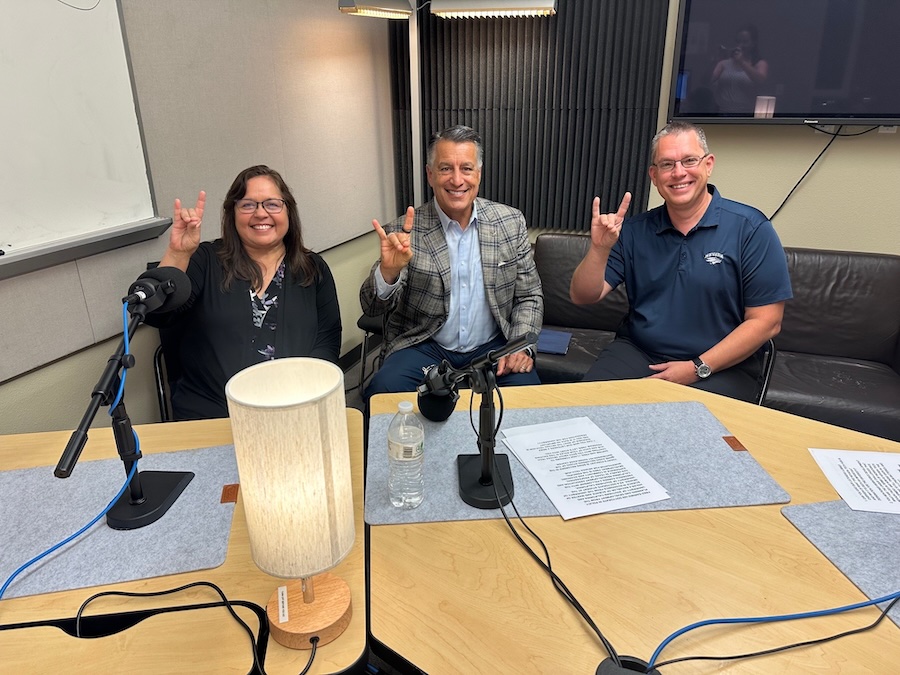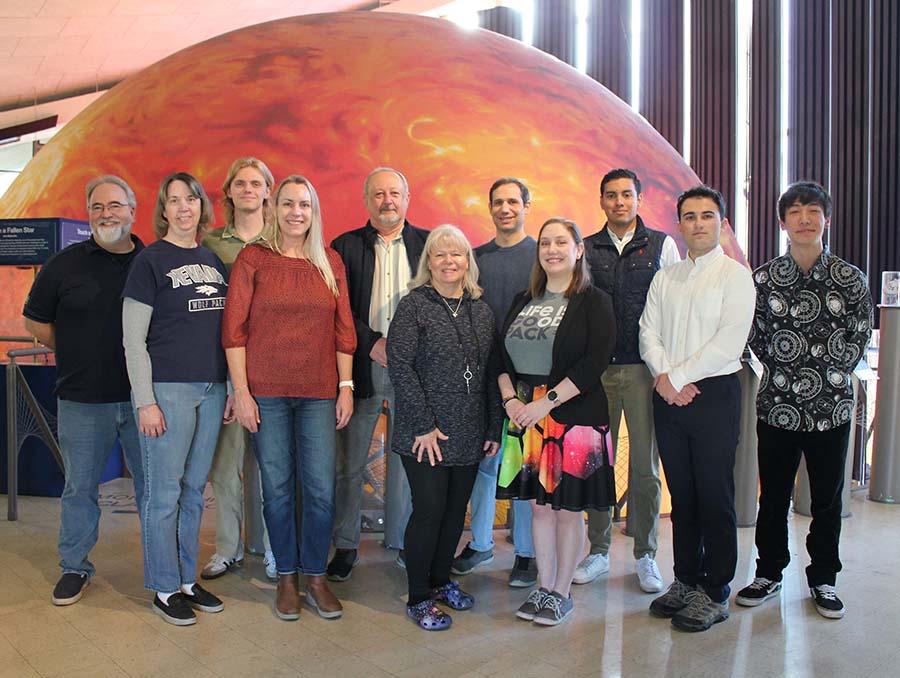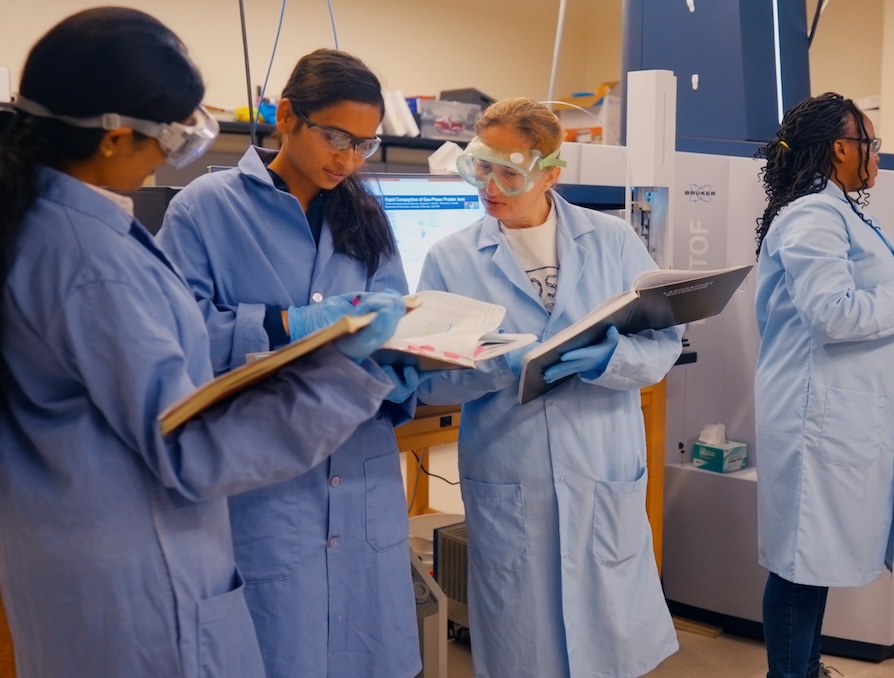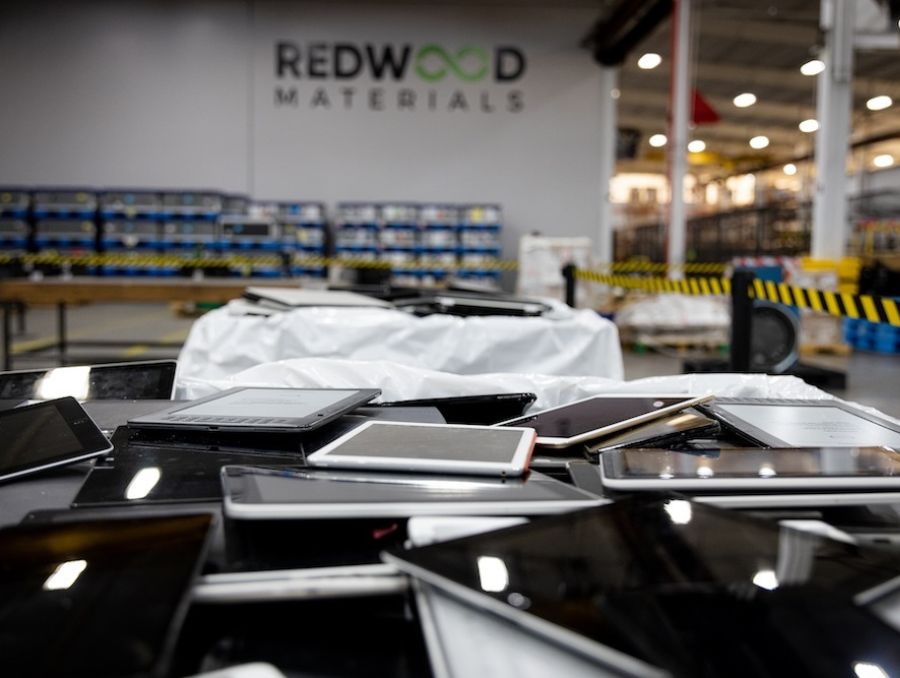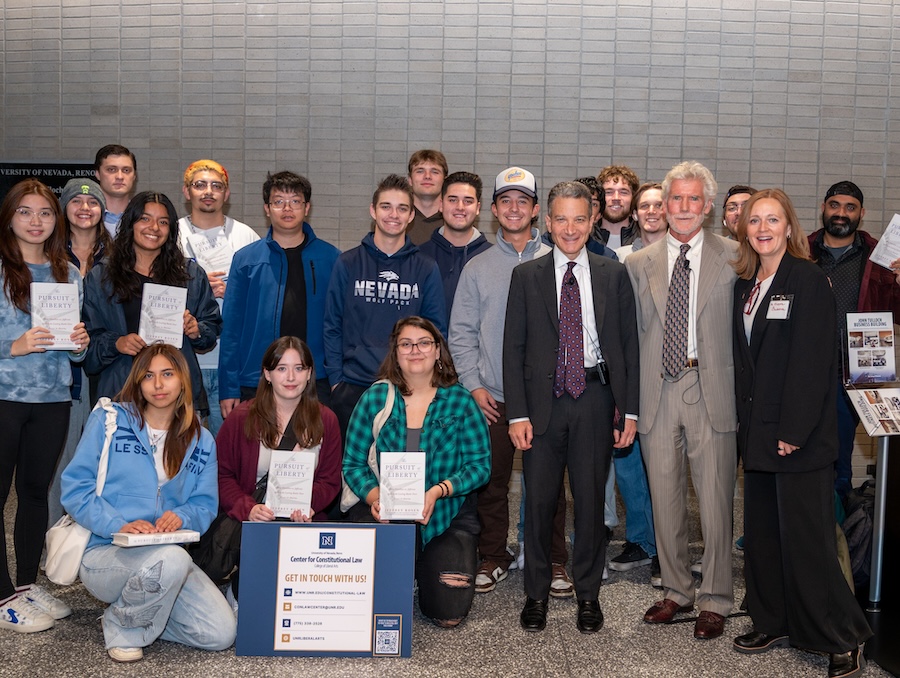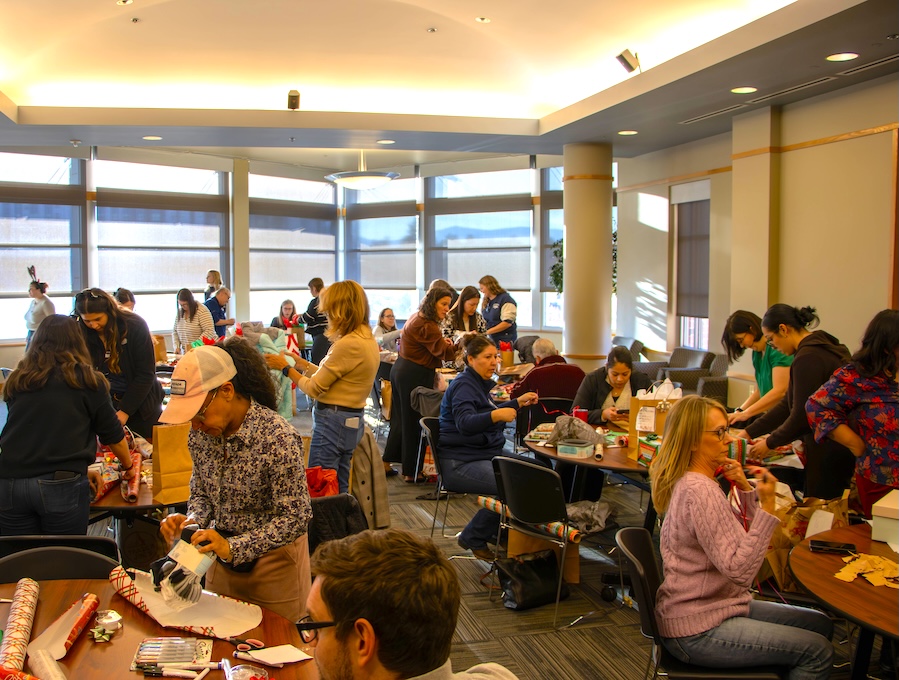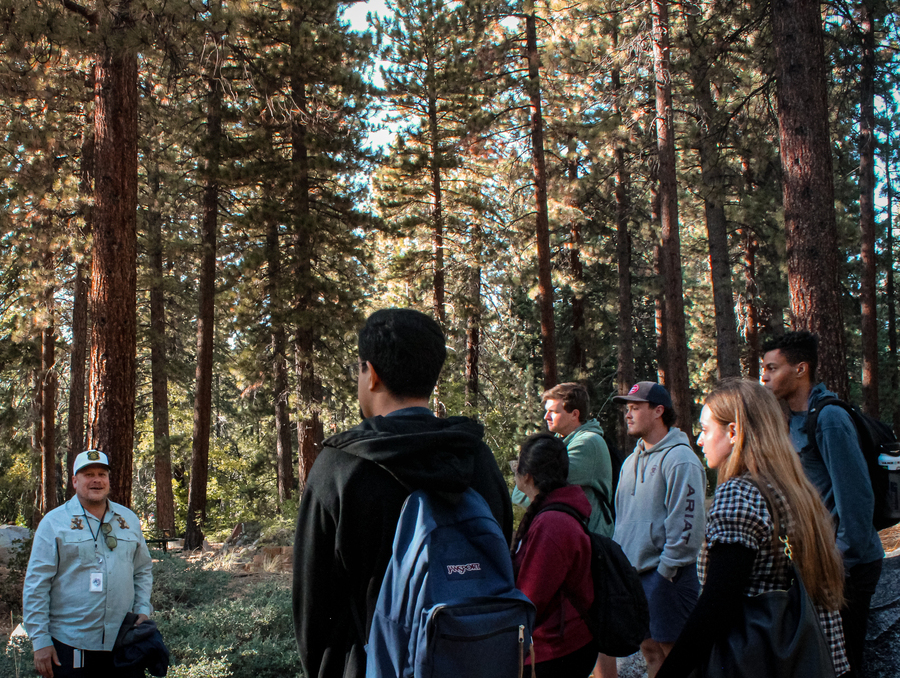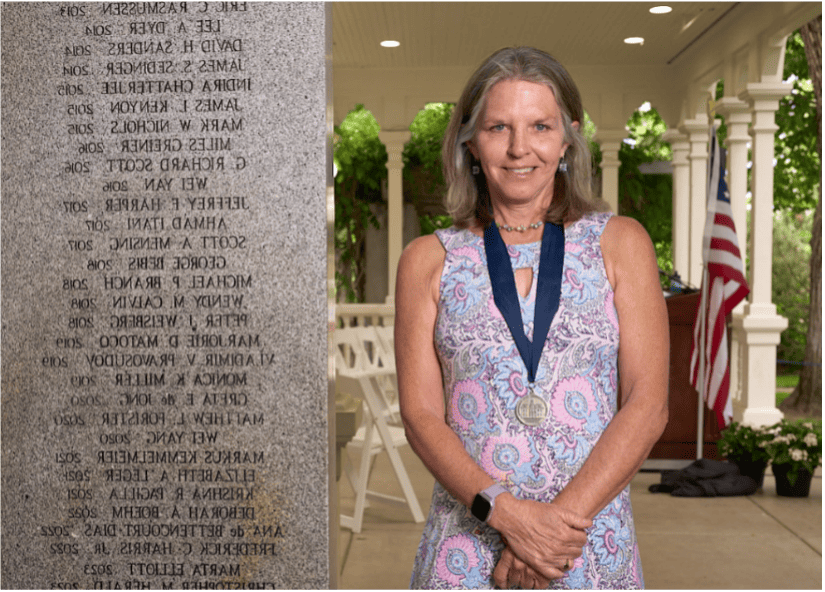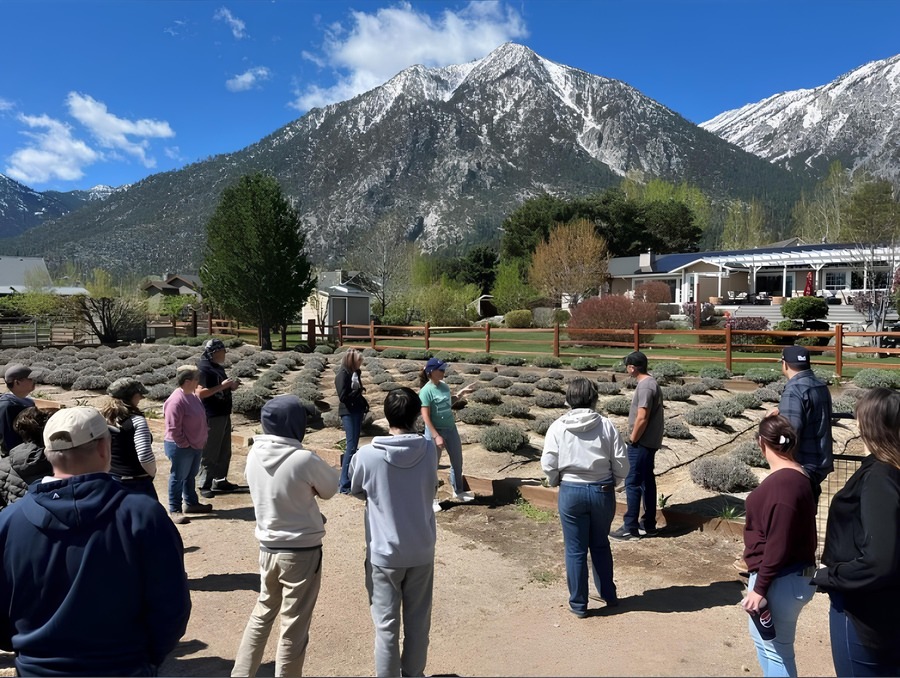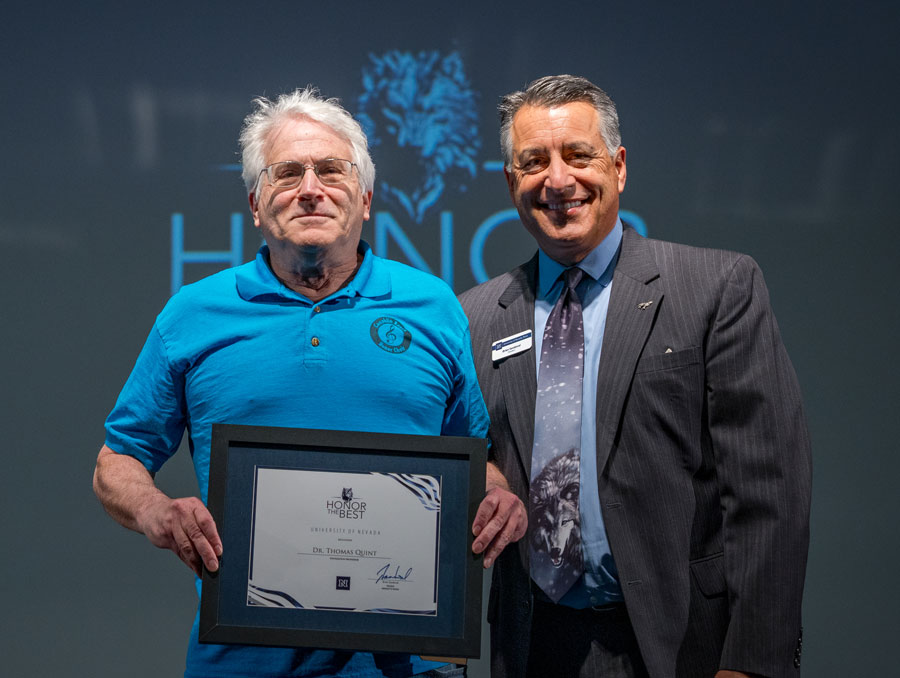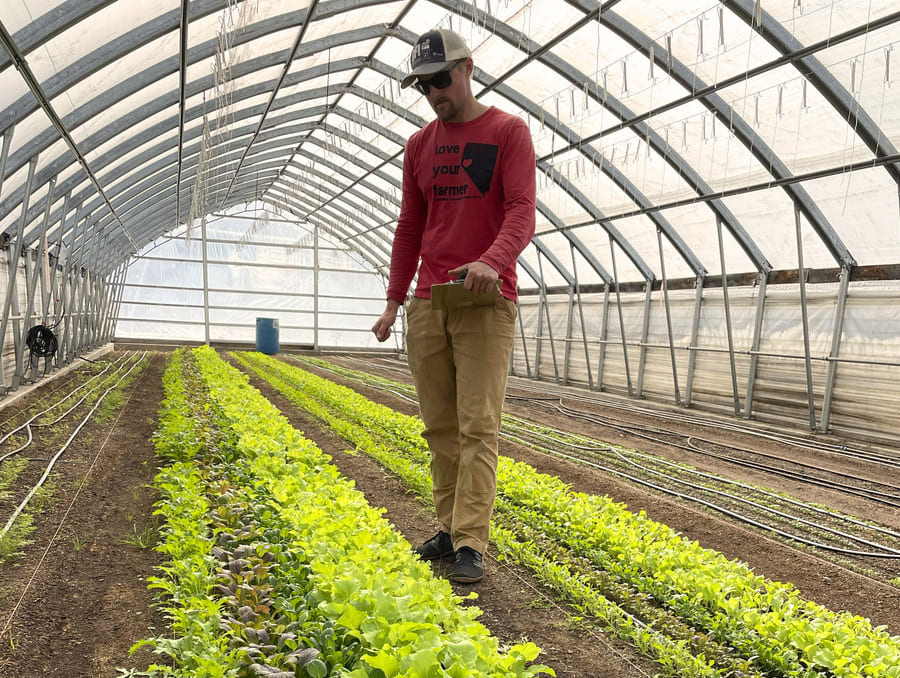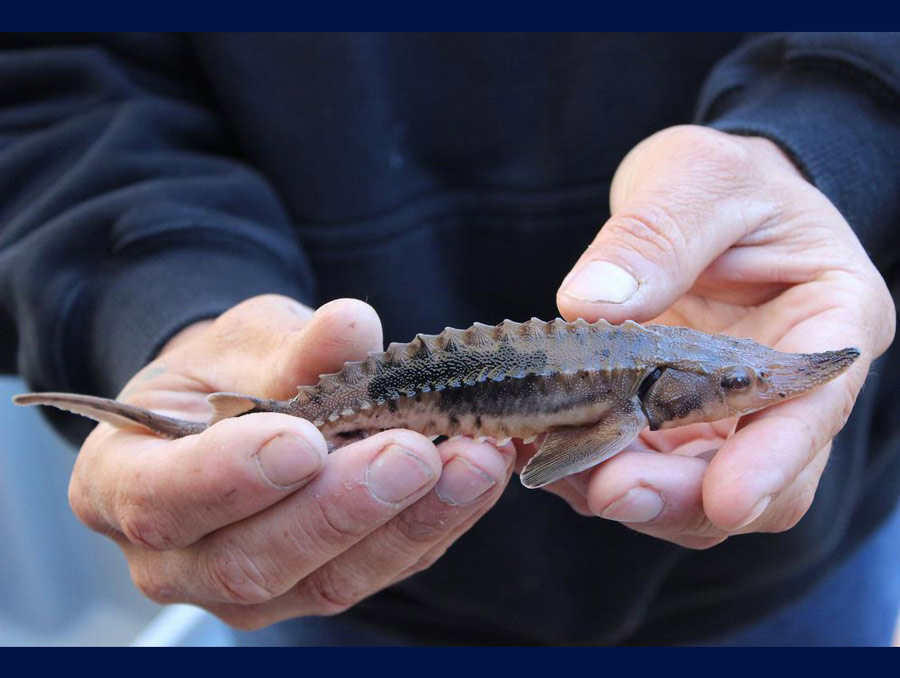
Thank you to the team at the University Libraries @One Center for producing and editing this episode.
In this episode of Sagebrushers, University of Nevada, Reno, President Brian Sandoval speaks with Daphne Emm Hooper, director of Indigenous Relations, and Dr. Fred Steinmann, director of the University Center for Economic Development. Hooper and Steinmann provide insight into the Nevada Tech Hub and the initiatives aimed at building a sustainable workforce and closing the lithium loop in Nevada’s electric vehicle and battery materials industry.
Hooper works closely with Indigenous communities throughout Nevada, creating programs and initiatives that support students, staff and communities while fostering strong university partnerships. Steinmann earned his doctorate in policy, planning and development from the University of Southern California, and holds a Bachelor of Science and Master of Science in economics from the University of Nevada, Reno. He has nearly 20 years of experience in community and economic development.
Hooper and Steinmann discuss the challenges of workforce development in Nevada’s emerging lithium battery and EV materials sector, the role of the Nevada Native Nations Center, the expansion of the consortium supporting the Nevada Tech Hub and the potential creation of 40,000 to 50,000 new jobs over the next five years.
Sagebrushers is available on Spotify, Apple Podcasts and other major podcast platforms, with new episodes every month.
Sagebrushers – S4 Ep. 6 – Nevada Tech Hub
In this episode of Sagebrushers, University of Nevada, Reno, President Brian Sandoval speaks with Daphne Hooper, director of Indigenous Relations, and Dr. Fred Steinmann, director of the University Center for Economic Development. Hooper and Steinmann provide insight into the Nevada Tech Hub and the initiatives aimed at building a sustainable workforce and closing the lithium loop in Nevada’s electric vehicle and battery materials industry.
President Brian Sandoval: Welcome back, Wolf Pack Family. I'm your host, Brian Sandoval, a proud graduate and the president of the University of Nevada. When it comes to clean energy transition, Nevada is in a unique position with our state's abundant critical minerals and a robust ecosystem of innovation. The state is poised to become the leader in electric vehicle, also known as EV, battery materials. Our two guests today are working on initiatives that are focused on closing what we like to call the lithium loop, where the entire lithium lifecycle takes place here in Nevada, here in northern Nevada, from mining and refining, battery manufacturing and ultimately, battery recycling.
Joining us today is Daphne Emm Hooper, the director of Indigenous Relations at the University. Daphne works closely with the Indigenous communities throughout the state, building meaningful partnerships and fostering strong connections with the University. Her team is committed to creating programs and initiatives that support Indigenous students, staff and communities, ensuring their voices are heard and opportunities for success are expanded. Daphne holds a Bachelor of Arts degree in political science, a Master of Arts degree in organizational management and a Master of Science degree in community economic development. She's dedicated her career to public service, serving as the city manager for the city of Fernley and the executive director for Nevada Urban Indians. She's also the co-founder of the Nevada Tribal Leadership Development Program at the University. Daphne is also a return guest to the podcast, having joined us in Season Two. So welcome back, Daphne.
Daphne Emm Hooper: Thank you.
Sandoval: And also with us today is Dr. Fred Steinmann, the director of the University Center for Economic Development. Fred earned his doctorate in policy, planning and development from the University of Southern California and holds a Bachelor of Science and Master of Science in economics from the University of Nevada. As a doctorate student at the University of Southern California, Fred earned a fellowship with the California Redevelopment Association and has nearly 20 years of professional experience in community and economic development. Fred is the principal investigator for the Nevada Tech Hub, and I'm going to ask you, Fred, to explain what a principal investigator is, because it sounds like it's something that it isn't. So, today's podcast is being recorded in the @One audio recording studio of the Mathewson-IGT Knowledge Center. Daphne and Fred, I look forward to chatting with you both about Nevada Tech Hub and each of your roles in this exciting program. Fred, let's start with you, and let's begin with giving our listeners a brief overview of what the Nevada Tech Hub is and why it's such an important designation for the University.
Dr. Fred Steinmann: Sure. Well, thank you, President Sandoval, for having me here today. The Nevada Tech Hub, or the Nevada Lithium Batteries and Other EV Materials Loop Tech Hub, is part of a federal program, the National Regional Technology and Innovation Hub Program, created as part of the CHIPS and Science Act and administered by the U.S. Department of Commerce and the U.S. Economic Development Administration. The Nevada Tech Hub is specifically focused on encouraging onshoring and reshoring, as well as creation of new businesses and the attraction, retention and expansion of existing businesses to close key parts of the supply chain of this emerging industry sector. The University of Nevada, Reno, was designated one out of 31 tech hubs nationally out of 489 applicants back in October 2023. And, of course, as many know at this point, our consortium in the tech hub was one of only 12 tech hubs awarded a phase two award in the amount of $21.5 million in federal funds with about $8.5 million in state and other match, bringing our total award to about $30 million. The Nevada Tech Hub is predominantly focused on workforce development as well as funding the Nevada Native Nations Center. And most importantly, I think it's a recognition of the hard work that has occurred across the state in the last 15 years of diversifying the state's economy around this key emerging industry sector. And specifically, it's a recognition of the University of Nevada, Reno’s, leadership in this particular space. Certainly, the efforts not just in the College of Business, but the College of Engineering, College of Science, our College of Agriculture, Biotechnology and Natural Resources, even the School of Medicine and the School of Journalism, have all been actively engaged in this space to encourage that new business creation, attraction, retention and expansion.
Sandoval: And we'll talk some more about it, but I don't think that this has gotten the attention it deserves. This is a really big deal, and to be one of 12 out of 400 applications to get funded and one of 31 out of 400 applications, I mean, these were all very sophisticated entities from around the U.S. that really wanted to do this and would trade places with us in a moment. So, I don't think we can overstate what an honor it is. And Fred and Daphne, both of you were very instrumental in bringing this to our campus, so I want to thank you publicly for that.
Fred, you mentioned workforce development. What are the unique challenges that Nevada faces in terms of workforce development, and how is the Nevada Tech Hub working to fill those gaps in the state's emerging lithium batteries and EV materials industry?
Steinmann: Sadly, the Nevada lithium battery, critical element and other EV material industry sector is certainly not the only industry with a workforce problem. The availability of skilled workers has been a challenge in several key industry sectors in the state, really going back to even before the pandemic. Workforce itself is tricky because it's the symptom of other underlying issues. First and foremost, the fact that 90% of the state's population and subsequent workforce is based in only three metro areas, and about 70% of that is just in one — in the Las Vegas metro area. And for an industry sector like this one, where a lot of the extraction, the processing and even a lot of the new advanced manufacturing and recycling is occurring in the rural parts of the state, there just isn't the availability of skilled workers to support, again, that business creation, attraction, retention and expansion efforts. We roughly anticipate this industry sector creating about 50,000 new jobs over the next four to five years. And to be able to successfully attract and retain a workforce, you also need the housing, the education, childcare services and even the healthcare services to attract and retain that workforce. So the Nevada Tech Hub, one of the two funded component projects out of phase two, is the workforce development component project, where the Nevada Tech Hub will invest about $18 million over the next four to five years, really supporting the expansion of workforce development programs at the Building and Trades Council of Northern Nevada, Great Basin College, Truckee Meadows Community College and Western Nevada College, to again ensure that we have a pipeline of available workers to support the continued growth of this key emerging industry sector.
Sandoval: Thank you, Fred. And just so our listeners understand this lithium loop, we are blessed — we being the state of Nevada — to have the largest lithium deposit in North America. So, it's right here, and then there's a processing that has to happen that isn't happening now. That's one of those gaps that you described. And then we have Tesla, Panasonic and others that are going to use that lithium in the advanced manufacturing process. And once those batteries are made, we also have the largest lithium recycler in the world, Redwood Materials, or Redwood Energy, I think they're calling themselves now. This lithium loop is all within 200 miles. So, we're really lucky. To get to a question — 40 to 50,000 sounds like a lot. Is that doable?
Steinmann: It's certainly doable from the creation of 50,000 new jobs. Companies like Redwood Materials, Lithium Americas, eye and ear in the Rhyolite Ridge area just outside of Tonopah and Goldfield in the central portion of the state — those three companies alone are looking to employ just about 10,000 to 12,000 people over the next four to five years. So, when we look at the expansion of the entire consortium and new businesses and existing businesses, getting to 40,000 to 50,000 new jobs created in that four- to five-year window is probably undershooting what that job creation is going to be. Meeting that demand for 40,000 to 50,000 new jobs is where the real challenge begins. And that's why, at the Nevada Tech Hub, we've taken a very comprehensive and inclusive approach, really trying to leverage the resources of the various workforce development initiatives across the state as it relates to lithium batteries, critical elements and other EV materials. We're also relying very heavily on our existing core consortium members — the Nevada Mining Association, the Nevada Battery Coalition and the Governor's Office of Economic Development — and specifically the Nevada Mining Association and, obviously, their membership and ties to critical elements, mining, extraction and processing as well, really to supercharge those workforce development efforts today.
Sandoval: No, that's fantastic. So, Daphne, I'm going to move to you now. Please tell us a little bit about the Nevada Native Nation Center and how your program supports the Nevada Tech Hub.
Hooper: Thank you. Sure. So, one of the funded components of the tech hub was the Nevada Native Nations Center, and through this program there are five components. So, looking at workforce, the first component is recruitment. How do we recruit our Native students to the University and to other opportunities in higher education, and particularly to STEM fields that will help charge these workforce needs? We bring students to campus and try to focus on high school students, giving them exposure, having them spend some time on campus and learn about different programming. So that's the first one. The second one is retention. Once we get our students into the University, it's important to make sure that they stay, are successful, and have the support and mentorship needed to complete their program and then move out into the workforce. The retention component includes a program we call the Tribal Academies. We're rolling that out in the fall and hiring some coordinators to head that up. The third component is the leadership development program for our tribes. We know our tribes sometimes lack capacity to be in rural areas and have a small workforce, so we need to give them the tools and skills to be successful. The fourth component is workshops. We work closely with the University Center for Economic Development to provide things like strategic planning, long-term economic development strategies, master plans — those kinds of things they might need support with. The fifth component is consultation. We need to make sure that we're talking to the tribes, getting their input, and ensuring they have a voice in this effort moving forward.
Sandoval: So, building off that last fifth component, what are some of the challenges regarding lithium and cultural resources, and how does the Nevada Native Nations Center help address those issues?
Hooper: So, we know mining can be challenging, and there are some controversies around what that looks like in Nevada and how it impacts our tribal communities. And so, with this effort, we don't take a stand one way or the other. We really try to build relationships and invite people to the table to have discussions about what those challenges might be as we affect potential tribal lands or cultural resources. We want to make sure industry understands what that means. And so, by having a discussion, being able to work through it together, I think, is helpful, and we're here to help do that.
Sandoval: So, for both of you, very briefly, we're one year in, now after the funding. What would our listeners most want to learn about what's happened in this past year since the .
Steinmann: Well, I can give a little bit of an update. Obviously, our major focus over the last year has been working with the consortium members and specifically the sub-awardees outlined in the workforce development component project, as well as building out the Nevada Native Nations Center Project. Right now, several of our sub-awardees, like Western Nevada College, Great Basin College and Truckee Meadows Community College, are all getting ready for their fall semester. We’re looking forward to seeing students go through their programs and then be placed within the industry sector itself at the Center for Economic Development. Again, we're very aggressive and active in our efforts to work with the tribes, as well as cities and counties throughout the state, on a wide range of economic development initiatives, specifically with the regional development authorities on new projects and new businesses coming into the area. So, over the next several months, if you're out and about, you'd certainly want to keep an eye out for those new businesses, ranging the gauntlet of the consortium in the loop as well.
Hooper: Yeah, I think we're standing up our Nevada Native Nations Center, and so we've had our summer lead program. We're hiring our coordinators for our mentorship program. We'll roll out conversations and workshops with tribes. We have an annual tribal summit where our tribal leaders get to come and talk with the President about the issues that they're facing, and hopefully we can prioritize what that looks like moving forward.
Sandoval: Part of why I asked the question is there's a lot of work that goes into prepping this, and I've always been a supporter of doing it well versus doing it fast. And so, I know the time and effort that it takes to put together these teams, these community partnerships, company partnerships and those things. So, we're almost running out of time, but for each of you — this goes so fast — we've talked about a lot, and we've talked about this five-year window. If we were to do another Sagebrushers five years from now, in your perfect world, what would we be talking about? And as we look back and you talk about this first year getting organized and implementing things, what would you like to look back on after five years and be able to show not only the state and the support that we've received from the Legislature and the Governor, but the Department of Commerce in Washington? You picked wisely. So, I'll start with Daphne, and then we'll go to Fred.
Hooper: Oh, I think in a perfect world, we would have lots of Native students coming to school, graduating and going out into the workforce. And I think, more importantly, it would be that there is a platform and a place to have honest discussions about the challenges and what those partnerships might be looking forward. So, I think we can get there and do that.
Steinmann: For me, I'd say it'd be meeting the promise of Nevada, becoming the country's true one-stop shop when it comes to this important area of national security. This isn't the first time the state of Nevada has answered the bell in terms of national security interests. This industry sector is vital to U.S. national security as well as our future economic development efforts. So, building out that lithium loop, closing those key gaps within the supply chain, creating those 40,000 to 50,000 new jobs, raising incomes, generating tax revenue for local governments and the state government — really kind of that beginning of a multi-decade industry sector to drive growth across the state.
Sandoval: Thank you. And in my mind, everyone knows what Silicon Valley is, and I think someday they’re going to speak of the lithium loop in the same way and what we've accomplished. And it all starts right here because of your hard work and a lot of people out there I know that you worked with. So, unfortunately, that is all the time we have for this episode of Sagebrushers. Thank you for joining us today, Daphne and Fred — you are wonderful.
Hooper: Thank you.
Sandoval: Join us next time for another episode of Sagebrushers as we continue to tell the stories that make our University special and unique. Until then, I'm University President Brian Sandoval, and as always, Go Pack!
